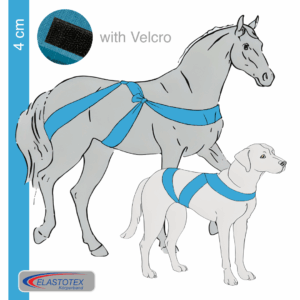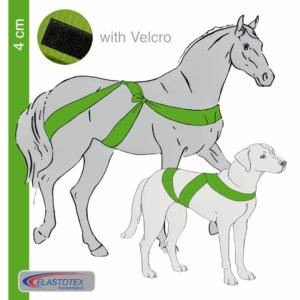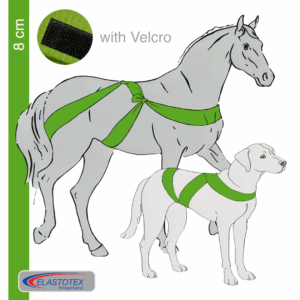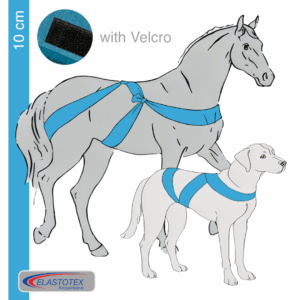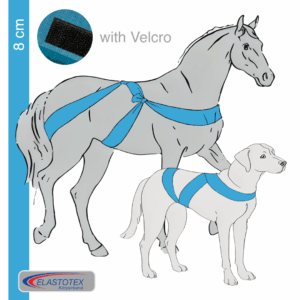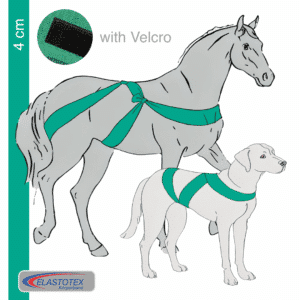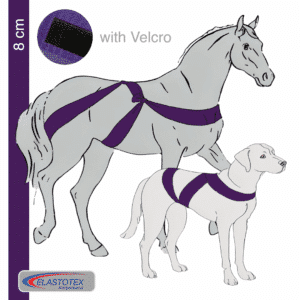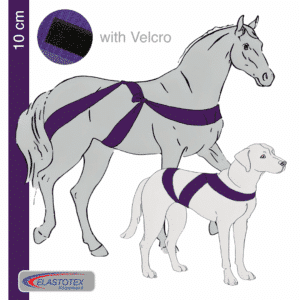Required Materials:
One strap with a width of 10 cm.
Effect & Benefits:
This hindquarter body strap enhances the horse’s awareness of its hind end and can support active engagement of the hind legs. It consists of a strap that is attached to the girth straps of the saddle or to the D-rings of a lunging girth and is guided around the horse’s hindquarters. This application helps the horse develop a better connection from back to front and become accustomed to wearing a girth. It can improve gait, rhythm, and impulsion.
This strap is especially useful for:
- Young horses just getting used to wearing a girth or saddle
- Horses that are either oversensitive or unresponsive to leg aids
- Horses that react nervously to movement behind them or have issues in narrow spaces
- Horses with stiffness, tail swishing, or dragging hind legs, as it can promote better balance and coordination
- Jumping horses, to help improve the connection from the hindquarters to the forehand
Application:
Ideally, the horse should already be familiar with other body straps. Alternatively, you can first apply the strap loosely and lead the horse in walk and trot by hand to test its acceptance.
Attachment to saddle or lunging girth:
- Decide where to attach the strap — this can be to the girth straps, D-rings, or the stirrup leather keeper loop.
- Attach one end of the strap with a flat, easily untied knot.
- Carefully unroll the strap and guide it around the horse’s hindquarters, maintaining steady physical contact.
- Secure the other end on the opposite side with a knot that is easy to undo.
- The strap should rest gently without causing pressure or slipping.
- Let the horse take a few steps and observe whether it feels comfortable. If needed, ask a second person for support.
Observations:
The effects of this body strap are often noticeable right away. Watch for changes in stride length, movement flow, and posture.
Many horses appear to move with shorter, more collected strides after the strap is applied, as they engage their hindquarters more consciously.
Important Notes:
- If the horse shows significant discomfort or slows down considerably, a loose rope may be a better alternative. The rope moves with the horse’s gait and can more effectively encourage hindquarter activity.
- If the horse is uncomfortable, it may be helpful to first use a different body strap or break the introduction into smaller steps.
Variations & Advanced Use:
If there is no suitable place to attach the strap to the saddle, or if the knot causes discomfort during riding, a second strap can be used. An alternative is the figure-eight body strap, which lies flat under the saddle flaps.
Depending on the horse’s conformation, the knots can be positioned in front of the knee roll and behind the saddle flap.
